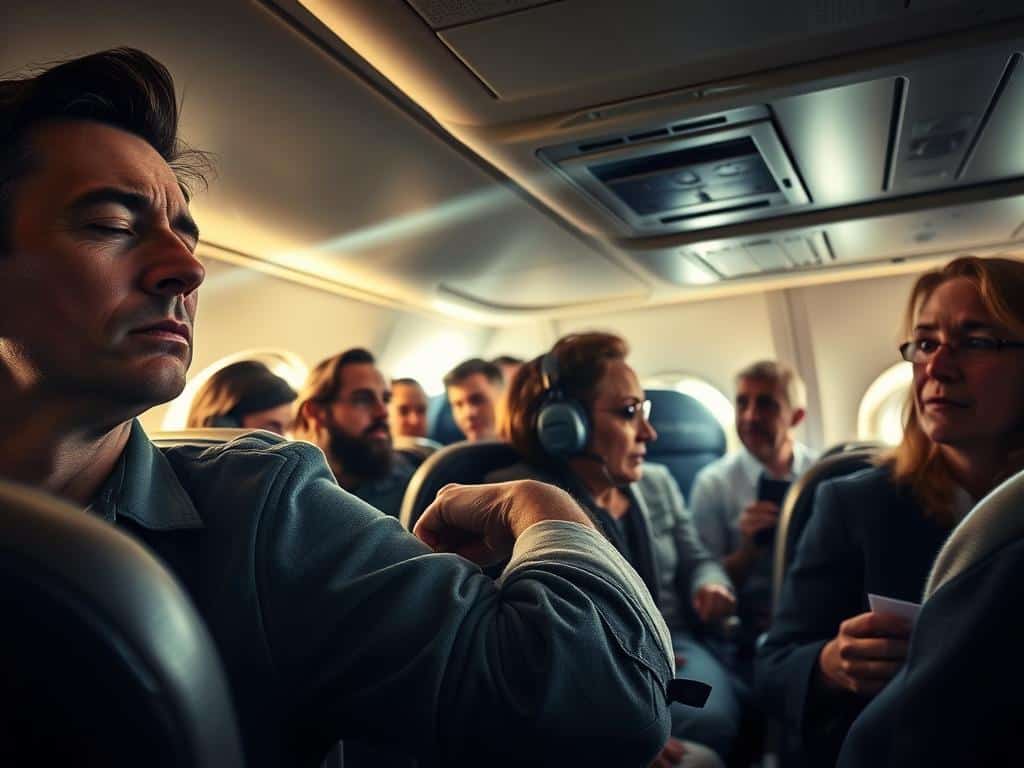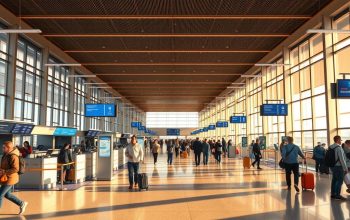As I settled into my seat on a packed flight from New York to San Francisco, I felt a knot in my stomach. The crew gave their usual safety announcements. But all I could think about was the airplane shaking during previous flights.
I wasn’t alone; I saw a few anxious faces around me. Each person was lost in their thoughts, gripping their armrests tightly. I remembered a friend who was so scared after a rough flight that they vowed never to fly again.
For many of us, surviving turbulence feels like battling an invisible foe in the sky. It sparks travel anxiety, making a simple trip an uphill struggle. Yet, turbulence isn’t just a discomfort; it’s a common part of flying.
Just as we trust our cars and roads, understanding the safety of our airplane can help. Knowing the mechanics behind those jolts could ease our fears.
With knowledge comes comfort, and as the plane ascended, I began to appreciate the engineering marvels that keep us safe. The reality is, turbulence remains a non-issue in terms of flight safety.
The Federal Aviation Administration says that in the past 50 years, no commercial passenger plane has crashed due to turbulence. Instead of letting airplane shaking stop my travel plans, I learned that the risks of serious turbulence are very low.
Accepting this could be the key to embracing the adventure that awaits beyond the clouds.
Key Takeaways
- Understanding turbulence can reduce travel anxiety.
- Turbulence is common; light turbulence occurs on nearly every flight.
- Most turbulence incidents are categorized as moderate, allowing for safe travels.
- Engineering makes commercial planes safe against extreme turbulence.
- Knowledge about turbulence can help you trust in flight safety.
Understanding Turbulence and Flight Safety
Turbulence is a big worry for many flyers, causing fear and anxiety. Knowing what turbulence is and how it affects flight safety can help calm nerves. It happens due to different atmospheric conditions. Learning about the causes of turbulence can make flying seem less scary.
What Causes Turbulence?
The causes of turbulence include wind patterns, thermal currents, jet streams, and the wake of other planes. Wind at lower altitudes can cause sudden changes in airflow, leading to the dreaded airplane shaking. Jet streams, mainly in winter, can cause turbulence even when skies look clear. It’s important to remember that most turbulence is normal and doesn’t usually pose a serious safety risk.
The Intensity of Turbulence
The turbulence intensity is ranked by the Federal Aviation Administration (FAA) from light to extreme. Pilots watch the weather closely and know how to handle turbulence. Even though turbulence is a common cause of accidents, serious incidents are very rare. Most injuries happen because people weren’t wearing seat belts.
On average, about 58 people get hurt in the U.S. each year from turbulence. Most of these are flight attendants and passengers who weren’t expecting the plane to shake.
Today’s planes are tested to be strong against turbulence. Pilots can change the plane’s altitude to find smoother air. This makes flying safer. Knowing about turbulence and how it’s handled can make flying less scary for everyone.
Surviving Turbulence: Tips for Nervous Flyers
Turbulence can make anyone nervous, even if you’ve flown many times. I started to face my fear of flying, which was a big step. By admitting my fear, I could manage it better.
I learned that turbulence happens in about 30% of flights. But severe turbulence is very rare, happening in only about 1 in 1,000 flights. This knowledge helped calm my nerves.
Acknowledge Your Fear
It’s important to face and accept your fears. Ignoring them doesn’t make them go away. By acknowledging my anxiety, I felt more in control.
This approach is similar to mindfulness. It helps you stay present and calm, even when things get tough.
Breathing Techniques and Mindfulness
Breathing exercises helped me a lot while flying. They can lower anxiety by about 30%. I found inhaling deeply and exhaling slowly very calming.
Adding mindfulness techniques, like imagining a peaceful place, made me feel even better. Watching a movie or listening to music can also help. It can make turbulence feel less intense by up to 40%.
Trust in Aircraft Design
Trusting in the design of airplanes helped me relax. Modern planes are built to handle turbulence safely. They’re designed to withstand forces 1.5 times stronger than the expected maximum.
Knowing that planes send out real-time turbulence data made me feel safer. Sitting over the wings can make turbulence 30% less intense. And wearing my seatbelt not only keeps me safe but also reduces injury risk by up to 80%.

Conclusion
Reflecting on turbulence and flight safety, I see how awareness helps with travel anxiety. Knowing what causes turbulence and its intensity helps me feel less scared. Remember, turbulence is common and doesn’t usually cause crashes.
It’s safer to be in the air than on the ground. You’re more likely to get hit by lightning or attacked by a shark than be in a plane crash. This knowledge is empowering.
Aviation tech, like the Traffic Collision Avoidance System, makes flying safer. Aircraft are tested to handle extreme situations, making me feel safer. Plus, over 95% of people survive plane crashes, showing safety protocols work.
Using tips like breathing exercises and mindfulness helps me face my anxiety. Each flight is a chance to get better and feel more confident. As I travel more, I find it easier to enjoy flying and stay safe.
With patience and understanding, turbulence becomes less scary. It becomes a normal part of my travels.



